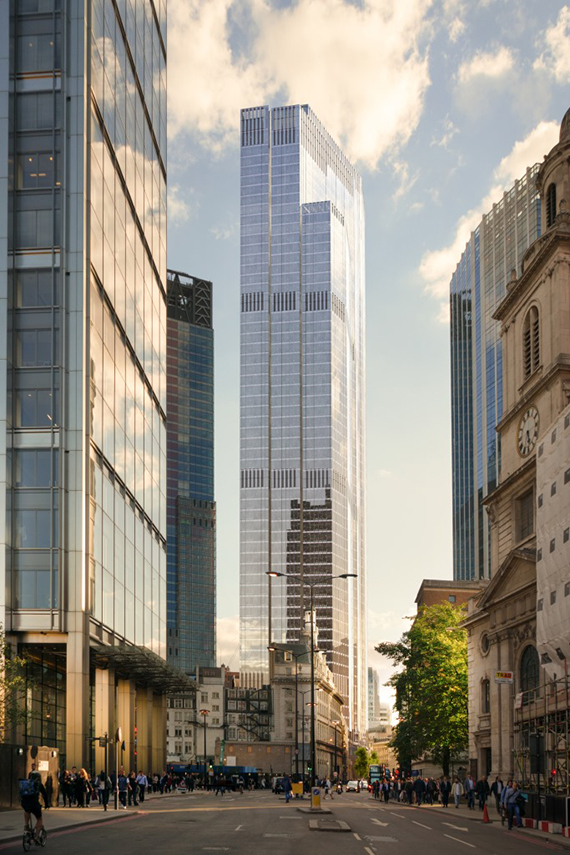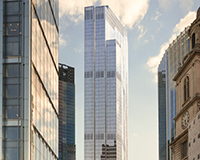 Plans for a 62-storey tower at 22 Bishopsgate, EC2, the site originally intended for the Pinnacle scheme, have moved a step closer after the City Corporation used statutory powers to fend off possible rights to light claims.
Plans for a 62-storey tower at 22 Bishopsgate, EC2, the site originally intended for the Pinnacle scheme, have moved a step closer after the City Corporation used statutory powers to fend off possible rights to light claims.
The planning and transportation committee of the City Corporation invoked rarely invoked powers that effectively involve the authority temporarily acquiring the site under a so-called section 237 agreement, in order to fend off possible legal action from neighbours concerned about rights to light.
Described as a “fresh start” for the Pinnacle site, the current proposal for 22 Bishopsgate – led by Lipton Rogers Development, AXA Investment Managers – Real Assets and PLP Architecture – is for a 62-storey building comprising almost 1m sq ft of offices.
The proposal was approved in December last year but the developers, fearing that right to light claims may be used to stop the plan from going ahead, sought assistance from the City to deal with a significant number of such claims involving surrounding buildings.
As a result, the City today authorised use of its powers under section 237 of the Town and Country Planning Act 1990, which overrides easements and certain other rights of third parties where land is acquired by a local authority for planning purposes.
This is the first high-profile tower for which the use of these powers has been authorised since the Walkie Talkie at 20 Fenchurch Street, EC3.
James Souter, property litigation partner at Charles Russell Speechlys, said: “Under planning laws, local authorities are able to acquire land for developments that are deemed to be in the public interest. Because these powers override private rights, they are regarded by many as an extreme measure and in most cases only used by local authorities as a last resort.
“Therefore the City’s decision to use these powers to facilitate the development of 22 Bishopsgate, effectively overriding rights-to-light claims, may be viewed as surprising particularly given that it came so soon after planning permission for the scheme had been granted.
“However, I don’t expect that this case will open the floodgates to further use of these powers by the City of London Corporation or other local authorities. Rather, this is a case where the use of the powers was justified in the eyes of the committee due to the high-profile nature of 22 Bishopsgate and its significant value to the City.
“The urgent need for top quality office space and the jobs that would be created were important factors in the decision.”
He added that it was also announced today that, following successful negotiations on a rights-to-light dispute, the proposed development at 120 Moorgate will also now go ahead. Those negotiations took place at the behest of the City following a request by the developer to engage its planning powers.











